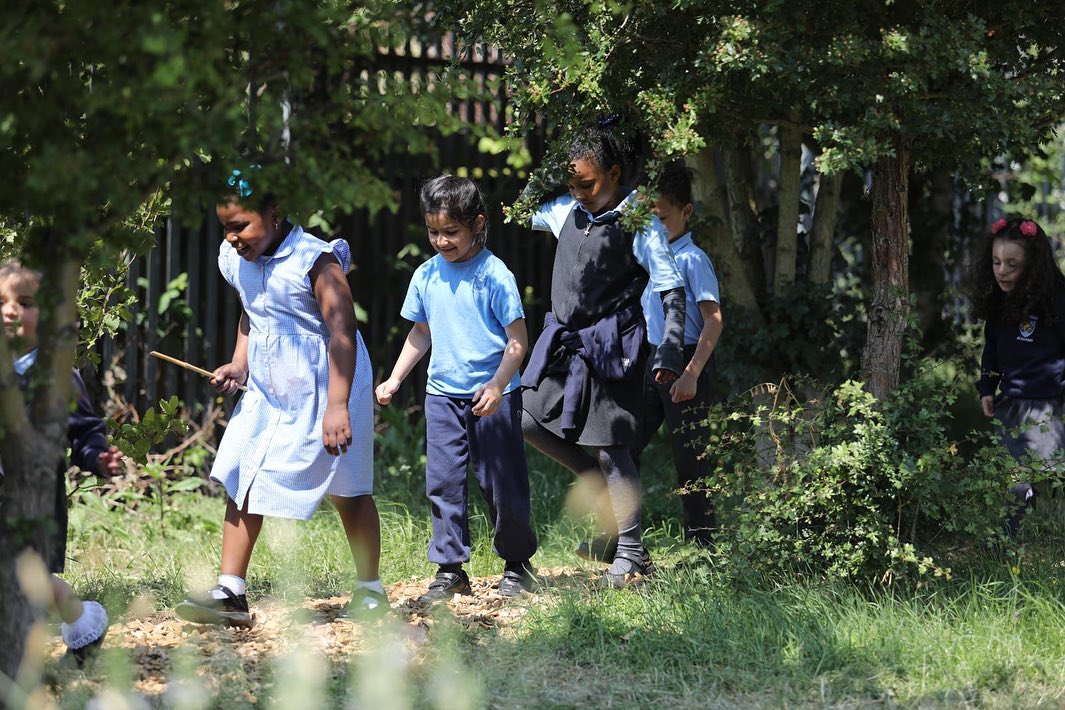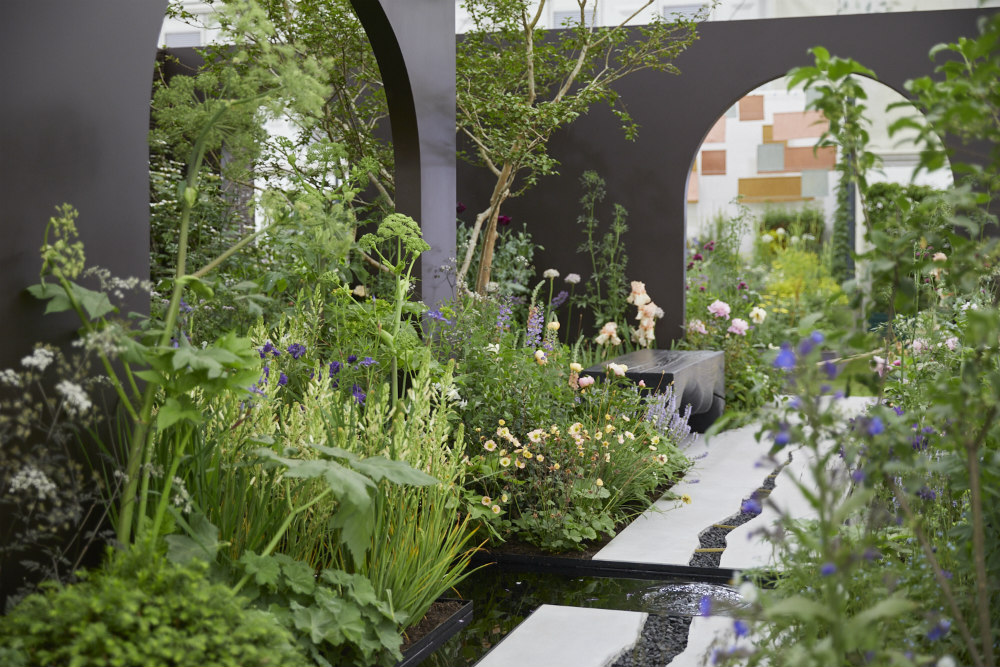Home to an abundance of landscape architects, gardeners and designers, and to the RHS Chelsea Flower Show in May, London is the place to discover gardens. But you might not expect those curated gardens to persuade harried urban dwellers of their beauty outside the prestigious horticultural event. Yet many of the gardens are relocated after the show; and charities with good causes are the driving force behind them.
People see the gardens and start talking during the show, and slowly lesser-known charities and vulnerable communities occupy a spotlight in a very mainstream platform for garden lovers. They get media attention, and from that moment it legitimises their causes. “The level of confidence that the event gives to smaller charities, causes and communities helps engender a sense of belief, and creates a catalyst for change,” says Harriet Ghaui, the CEO of Project Giving Back, the non-profit established by two anonymous philanthropists behind this activist idea providing the support for gardens for good causes.
Once the show is over, these gardens are rehomed to permanent sites for long-term impact in their communities, many of which are urban, where they can continue to benefit a wide range of users. The Core Arts Front Garden Revolution reimagined a common front garden of two urban households that decided to remove their defining boundary for everyone’s enjoyment. The charity Core Arts promotes social inclusion and reconnects individuals experiencing mental health difficulties in the community, and has re-used all elements of the Chelsea garden to create a new community garden in Hackney, London.

In Liverpool, a “garden infused with the magic of discovery inherent to foraging” has been recreated at the entrance of the Alder Hey Children’s Hospital inspiring children to lead active, healthy and pleasurable lives. While I listen to Ghaui talking about these islands of greenness, I am particularly intrigued by how charities and designers come together to make this happen.
“Two thirds of the applications come from already formed partnerships between charities and designers, and we do due diligence on the charities,” says Ghaui. Some charities already run urban gardens or use green spaces for horticultural therapy as a big part of their service offer, she explains, but they apply for our funding because they want to showcase their causes at the event.
That is the case for Horatio’s Garden, designed by Harris Bugg Studio, which will be rebuilt at the Princess Royal Spinal Injuries Centre in Sheffield. It will be the eighth garden created as part of Horatio’s mission to come up with restorative havens for people recovering from spinal injuries in NHS units.

Or St Mungo’s ‘Putting Down Roots’ Garden, split and relocated across two sites – one around derelict spaces in London Bridge City at Southwark Crown Court; the other in Guy’s Hospital campus at King’s College London. The homeless charity St Mungo’s already runs the horticultural training and therapy programme Putting Down Roots to help people get off the streets and back into accommodation. It has partnered with Cityscapes for fifteen years, using landscaping as a means to help people find stability. The people recovering from the issues that cause homelessness are the ones maintaining the urban gardens.
In other cases, charities don’t have anything to do with a garden but plan to create one as a way to strengthen local partnerships, like Fashion Revolution. The founders run a campaign for sustainability in the fashion industry and have partnered with a school where the garden is now located, so they can teach students how plants are used for creating fabric and natural dyeing.

But there are other applicants, either charities or designers, that come forward separately and Project Giving Back facilitates a ‘speed dating’ process between them to find the right partner. Pollyanna Wilkinson and the charity Mothers for Mothers met thanks to Project Giving Back. Their encounter burgeoned into a garden to help cope with postnatal depression, anxiety and isolation for mothers, which was rebuilt after RHS Chelsea 2022 at Hartcliffe City Farm in Bristol. And the garden was also symbolic – a fractured pathway through the garden “demonstrated the physical and mental journey of rupture and repair” while the greenery runs wild as a sign of hope and freedom to navigate the challenges of raising young children.
Our priority is the cause first, if we can do it in a way that invests in new talent in the industry and brings new designers to the show, then that is the best case and an added bonus.
Looking at the pictures of these beautiful gardens, I wonder how easy it is to relocate them. Ghaui thinks, “if there is criticism to level at all of this, it is the sustainability part; how sustainable is it to spend three weeks building a garden in London that is open to the public for just one week, before putting it on a truck and sending it across the country? I am not going to pretend it doesn’t have carbon implications, but we are working hard with the teams on how they can design the garden with the end location in mind and make the relocation as modular and sustainable as possible. The relocation plan is one of the key requirements in the application process.”

In all aspects, flexibility and agility characterises this form of creative philanthropy by Project Giving Back. “We try to be as flexible as possible and aim not to put too many restrictions on our funding. Instead of building rules that a charity ends up chasing, we give the charity an opportunity that can be used in the best possible way to fit the organisation. And from there I think the outcomes and the final effect can be more unexpected or unusual, and importantly, more beneficial,” says Ghaui.
In fact, Ghaui continues explaining, when the Mind Garden by Andy Sturgeon was selected to participate in the show last year, nobody could foresee the garden’s ripple effect. The garden relocated to a space which had been derelict for 50 years, which triggered the application for a business licence in order to use the space, street cleaning began, and a green corridor was established, attracting more people to the space to relieve stress and anxiety, forming bonds among the community.

I challenged Ghaui on what takes priority – the garden designers and supporting new talent or the cause? “Our priority is the cause first, if we can do it in a way that invests in new talent in the industry and brings new designers to the show, then that is the best case and an added bonus.” And she adds, “there are often cases where a big designer has taken on a lesser known cause that really benefits the charity, and vice versa.”
Tom Massey, quite well-known in the design space, has shed light on The Royal Entomological Society, not well-known to many people. His garden will be rebuilt at IQL Stratford, East London next to the Olympic Park, incorporating an outdoor laboratory in the form of a dome made up of iridescent hexagonal panels, inspired by a compound insect eye, from where to study, research and monitor insects visiting the garden.

“You are always grappling with the power imbalance that you have as a funder, and particularly when it is private philanthropy,” says Ghaui. “But, I think, what our philanthropists have been quite smart about was in setting up Project Giving Back so that it becomes a structured vehicle through which to give. You can put in place at least guide rails to strive to be as democratic and fair as possible.”
One could argue why not just give the money straight to the cause, instead of spending on gardens at the RHS Chelsea Flower Show, or building the garden directly at the site. “We review the cost-benefit every year and we are still in the same position that the benefit of getting more attention for the cause is worth the cost,” says Ghaui.
Once the show is over, ideally, the gardens relocate to places that everybody can access. Either these urban gardens are directly accessible to the public or at schools, hospitals and other community spaces where they may have particular open days. Ultimately, the monumental efforts of Project Giving Back is a deluxe gift to cities, where urban dwellers can pause for a few minutes and drift through greenery that makes you feel that you’re being given access to hidden gardens and human causes that others are not privy to. They beckon you into their world, and may even change your perspective.”




